1. Barrel Chairs
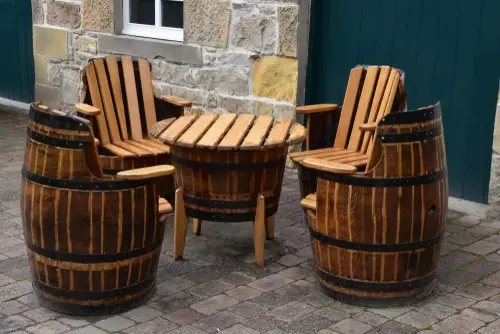
The classic barrel chair, with its curved back and enveloping design, was once considered outdated and too “cutesy.” Its small footprint and rounded shape seemed out of step with the angular furniture trends of the time. Now, barrel chairs are everywhere as statement seating. Their curves make them visually soft and inviting, perfect for reading nooks or lounge areas.
Modern interpretations often mix leather, velvet, or patterned fabric with minimal legs. The silhouette works well in both small apartments and large living rooms. It’s approachable, stylish, and comfortable—a rare combination in one piece. Barrel chairs now feel like a cozy design secret rather than a dated relic.
2. Memphis-Style Chairs
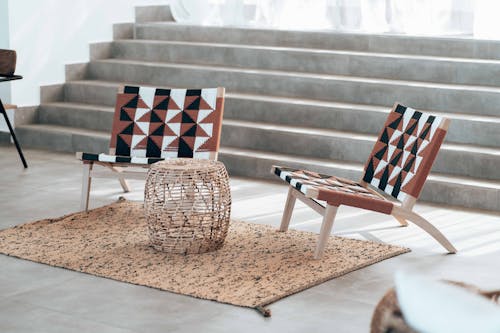
Back in the ’80s, Memphis-style chairs were the poster child for bad taste. Their jagged shapes, bold colors, and asymmetrical patterns made people either love or laugh at them. Today, designers are leaning into these bold statements again, often using muted versions of those signature geometric prints. They add a playful, artistic touch to modern interiors without feeling overpowering.
These chairs are perfect for accent pieces in living rooms or home offices. People now appreciate them for their sculptural quality rather than just their color chaos. Pairing a Memphis chair with neutral furniture keeps the space feeling fresh. It’s all about turning what was once “tacky” into a deliberate design choice.
3. Lucite Furniture

Lucite, or clear acrylic, was called “cheap plastic” back in the day. People didn’t take it seriously, thinking it belonged in a cheap office rather than a stylish home. Fast-forward to now, and Lucite is considered ultra-chic. Its transparency creates a floating effect that makes spaces feel more open and modern.
Lucite chairs, desks, and side tables are now mainstays in boutique hotels and stylish apartments. Designers love mixing it with plush fabrics and metallic accents for contrast. It works as a subtle statement piece because it’s visually light yet surprisingly elegant. This resurrection proves that transparency doesn’t have to equal invisibility in design.
4. Oversized Sectionals
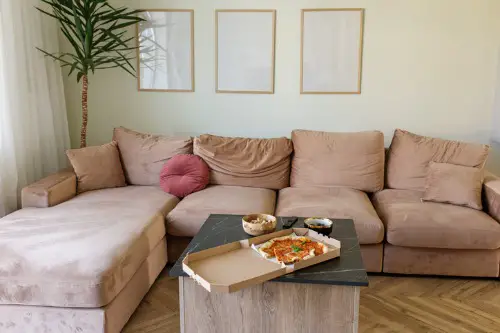
In the ’80s, massive, overstuffed sectionals were often seen as impractical space hogs. Critics called them “sofa bunkers” because they dominated entire living rooms. Today, oversized sectionals are embraced for comfort and functionality. They’re perfect for lounging, hosting movie nights, or cozying up with family.
Modern versions are sleeker, with lower profiles and modular options. You can rearrange pieces to fit different spaces, making them versatile as well as luxurious. The key is pairing them with minimalist decor so they don’t overwhelm a room. They’ve become a symbol of casual, inviting style rather than excess.
5. Velvet Upholstery
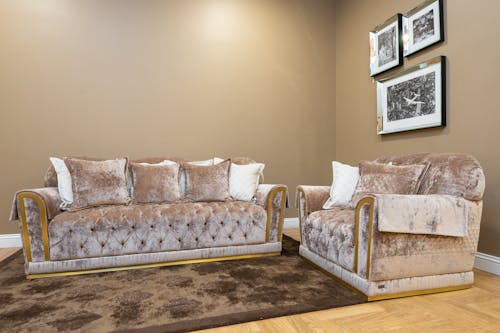
Velvet screamed luxury in the ’80s but also had a reputation for being gaudy. Bold jewel tones and shiny finishes often made people shy away from it. Today, velvet is back in a more sophisticated palette. It’s rich, tactile, and instantly adds warmth to any room without feeling over-the-top.
Velvet armchairs and sofas are now often paired with matte metals and natural woods. Designers love its ability to catch light and add dimension to a neutral space. Plus, velvet textures make a room feel cozy and indulgent. It’s a reminder that tactile fabrics never truly go out of style.
6. Glass Coffee Tables
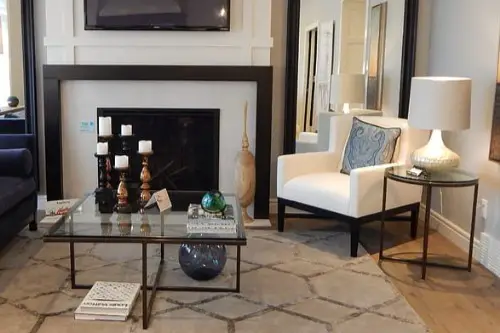
The glass coffee table was everywhere in the ’80s, often paired with chrome or mirrored legs. Critics mocked them for being impractical—fingerprints, scratches, and that constant fear of shattering. Today, the glass table is celebrated for its airy, minimalist vibe. It’s all about letting light pass through, making a room feel larger and more open.
Designers are updating the classic with sleek, rounded edges or tinted glass. The modern iteration balances elegance with functionality, and tempered glass makes it much sturdier. A glass coffee table can anchor a living room while keeping the focus on statement sofas or rugs. The key is pairing it with textures to avoid feeling too cold or sterile.
7. Mirrored Furniture
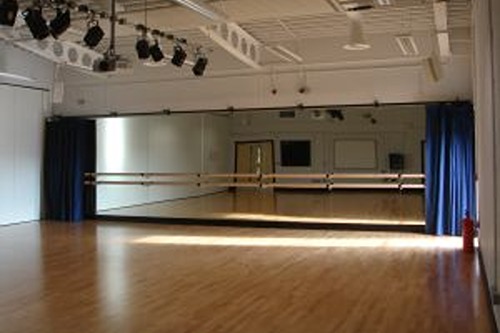
Mirrored dressers and side tables were considered over-the-top in the ’80s, often criticized for looking like something out of a disco. They were associated with glamour that sometimes felt excessive. Today, mirrored furniture is seen as elegant and reflective, literally and figuratively. It brightens a room and adds subtle sophistication when done in moderation.
The modern trend uses mirrored pieces sparingly, often combined with metallic frames. Designers balance reflective surfaces with matte textures to avoid a blinding effect. A mirrored nightstand or console adds drama without dominating the space. It’s all about understated sparkle rather than full-on glitter.
8. Lucite Bar Stools
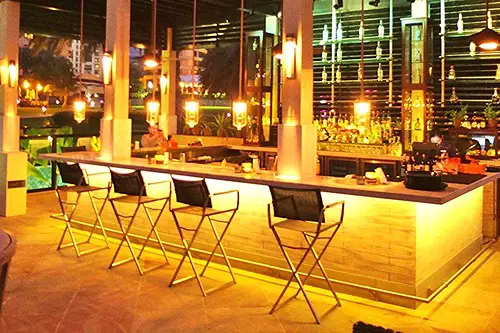
Lucite bar stools were considered gimmicky in the ’80s, often dismissed as too futuristic or fragile. People laughed at their clear, almost invisible look, thinking practicality was sacrificed for style. Today, they are appreciated for their ability to disappear into a space visually. They make kitchens and bars feel light, airy, and uncluttered.
The modern twist combines Lucite with plush seats or gold accents. They work perfectly in small apartments because they don’t block sightlines. Designers love them for their playful, ghostly aesthetic that complements any color scheme. They are subtle, yet undeniably chic.
9. Chrome Furniture
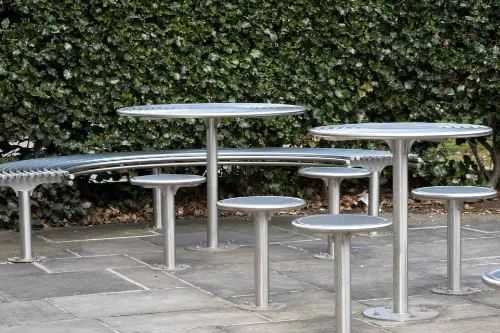
Chrome legs, frames, and accents were ubiquitous in ’80s homes but mocked for being cold and industrial. The shiny metal was associated with sterile offices rather than cozy living rooms. Today, chrome is back but balanced with warmer materials like wood or leather. It adds a sleek, reflective quality that makes furniture look polished and contemporary.
Coffee tables, desks, and shelving units often use chrome as a framing element. It’s no longer the star of the show but a stylish supporting player. The reflective surface adds dimension and catches light beautifully. Chrome now feels intentional rather than overdone.
10. Rattan Chairs
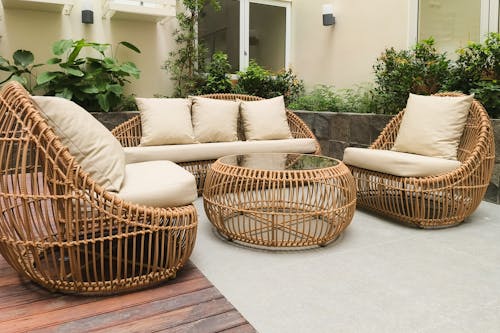
Rattan chairs were considered “tourist furniture” in the ’80s, often relegated to sunrooms or porches. People mocked the woven texture as outdated and too casual. Now, rattan is celebrated for its natural, sustainable aesthetic. It brings a laid-back, organic vibe to indoor and outdoor spaces alike.
Designers mix rattan with velvet cushions or metal accents for a modern twist. Its texture adds depth without overwhelming a room. Lightweight yet durable, it’s perfect for creating a relaxed, boho-inspired space. The old stigma of “cheap wicker” has completely vanished.
11. Modular Sofas
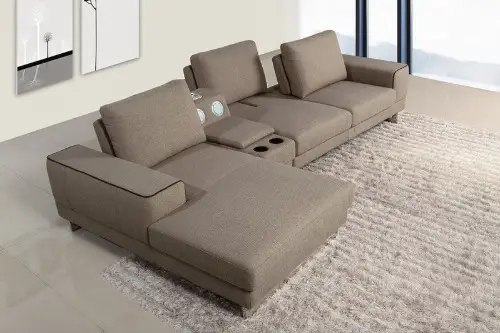
Modular sofas were once seen as awkward and impersonal. Critics thought the separate pieces made it hard to achieve a cohesive living room look. Today, modular sofas are prized for their versatility. They can be rearranged for lounging, entertaining, or even creating a daybed-like space.
Designers love how they adapt to different spaces and lifestyles. Modern versions feature clean lines and neutral fabrics, making them chic rather than clunky. Modular sofas are practical, customizable, and surprisingly cozy. They’ve gone from “meh” to must-have in contemporary interiors.
12. Lucite Coffee Tables
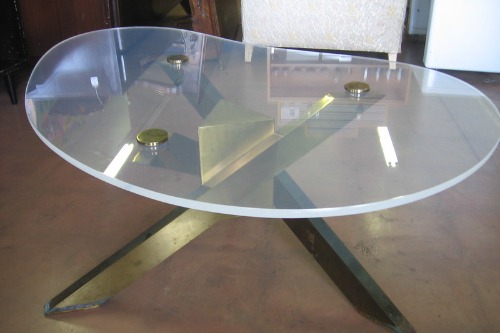
Lucite coffee tables were ridiculed as cheap-looking plastic in the ’80s. People questioned why anyone would want furniture that was practically invisible. Today, they’re celebrated for their minimalist elegance. They visually open up a space, making even a small living room feel airy and sophisticated.
They pair beautifully with textured rugs or colorful sofas. The clear surface makes them easy to style with books, plants, or decorative objects. Lucite coffee tables are now seen as design-savvy choices rather than budget experiments. They prove that what’s invisible can still make a statement.
13. Tubular Metal Chairs
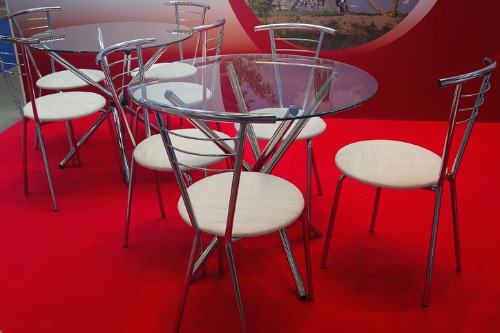
Tubular metal chairs were ubiquitous in the ’80s but mocked for feeling cold and industrial. People associated them with cafeterias and office waiting rooms. Today, they’ve been reinvented as sleek, minimalist seating options. Designers appreciate the clean lines and modernist feel, which work well in both kitchens and outdoor patios.
Newer versions often feature powder-coated finishes or combined wood and metal for warmth. They’re lightweight, stackable, and perfect for flexible spaces. The tubular design adds a retro flair while staying completely current. It’s a classic example of form meeting modern function.
This post 13 Furniture Pieces Everyone Mocked in the ’80s That Are Back in Vogue was first published on Greenhouse Black.
